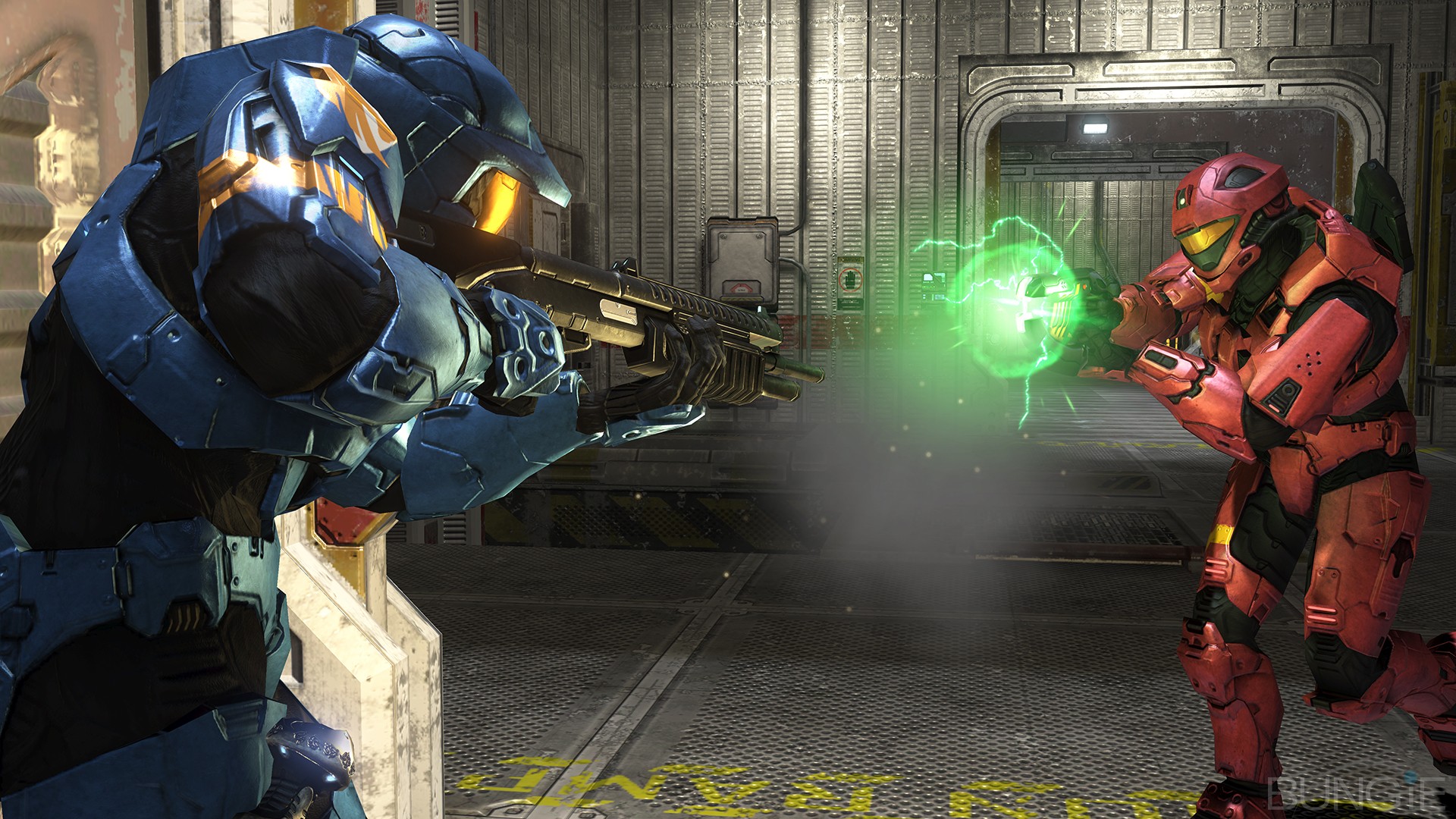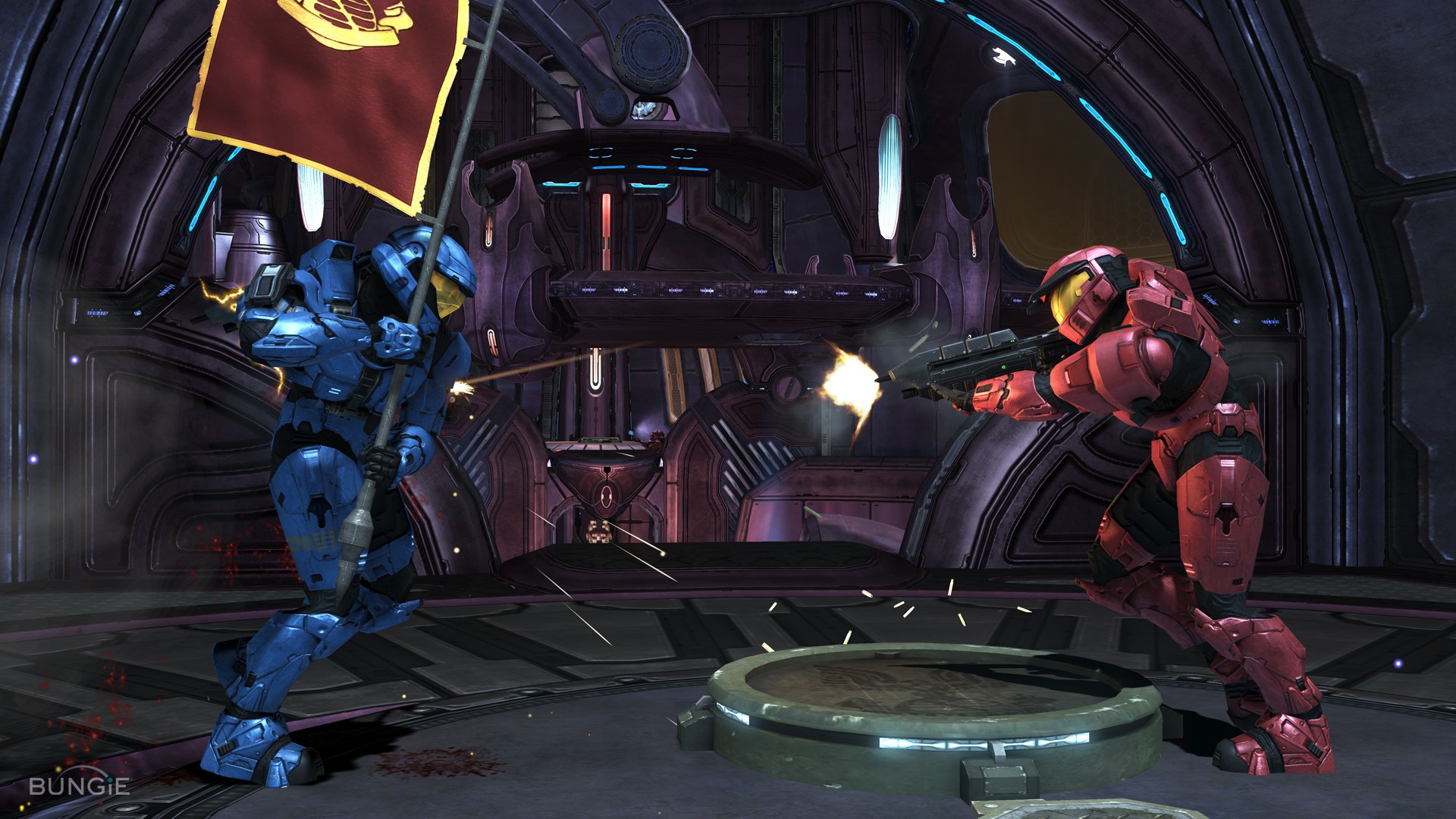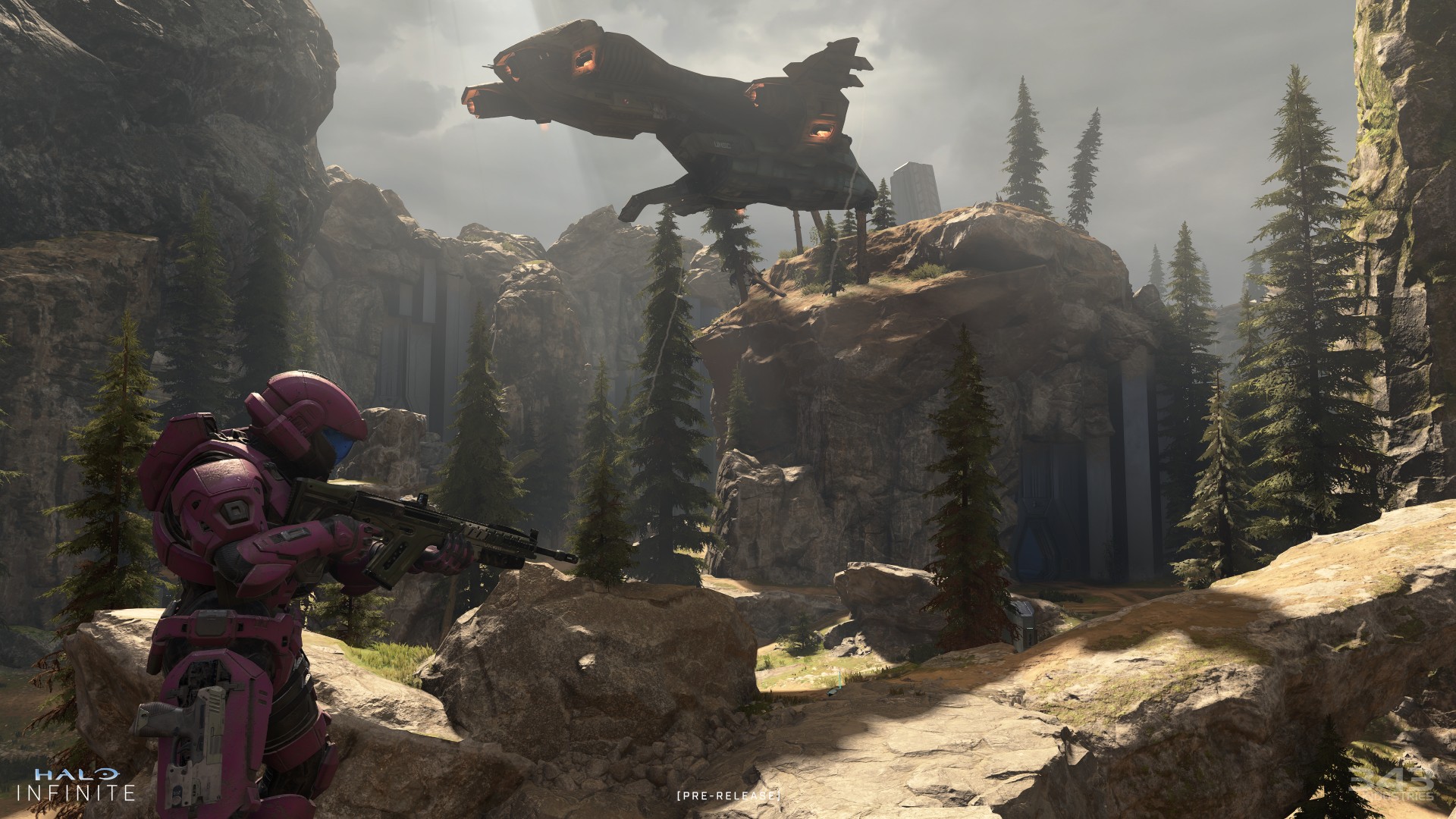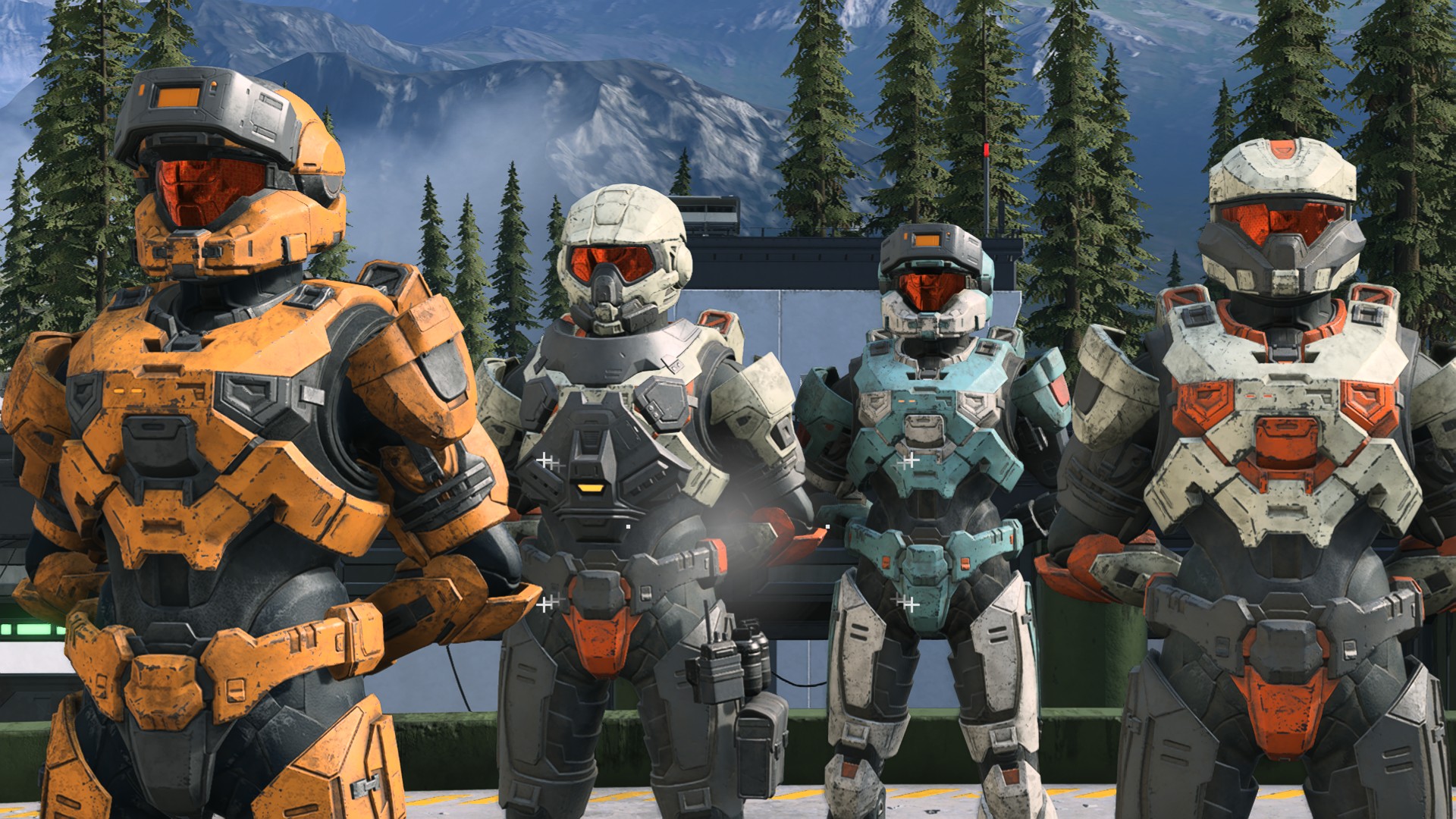Why Halo Infinite is drawing so many comparisons to Halo 3
The infinite appeal of Halo 3 and why we're comparing it to this year's Halo title

Amongst all the discourse surrounding Halo Infinite, you've probably heard "it feels like Halo 3" the most. Halo 3 is the standard-bearer for the Halo franchise, a game that was, as the kids say, a cultural reset. But it's also well over a decade old, which means many of the players interested in Halo Infinite have never played it – and those of us who have may only vaguely recall its core conceits.
With players, streamers, and other members of the gaming industry almost uniformly comparing Halo Infinite to Halo 3, it's important to establish just what that comparison means. Halo 3 was a major shift in gaming culture, a massive blockbuster of a game that was so huge, Hollywood blamed it for lower-than-expected box office sales. Halo 3 took the classic Halo formula and improved upon it enough to offer players new and exciting ways to play an already beloved game – which is exactly what Halo Infinite is gearing up to do this December. Add in an emotional gut-punch of a campaign that was initially intended to "finish the fight", which lines up with 343 Industries' promise that Infinite will be the last standalone Halo title for the next 10 years, and it's easy to see why the two games are so readily compared.
Finishing the fight


I spent a weekend in Halo Infinite Big Team Battle and I can't stop thinking about it
There are echoes of Halo 3 in Halo Infinite's equipment, colorful Spartan armor, and updated take on the classic map, Valhalla. But Halo Infinite's nods to the 2007 game don't end with the obvious ones; the essence of Halo 3 feels like it's been aerosolized and spritzed through Halo Infinite – but what exactly is the essence of Halo 3?
With Halo 3, Bungie had the full potential of the new Xbox 360 tech at its fingertips, and used that to create more detailed multiplayer maps of various sizes, while also bringing back (and improving upon) some classic Halo and Halo 2 maps. As far as the franchise goes, Halo 3 understood the assignment, offering players a competitive multiplayer mode that rewarded skill over cheesiness. Yes, the skill ceiling was incredibly high, but other than a few annoying map exploits, if you died in Halo 3, it was because you were outplayed.

Halo 3 introduced equipment to the series like the Bubble Shield, Grav Lift, and Power Drain. This was an incredibly underrated addition that improved upon the meta established by Halo 2 in the previous generation. Halo was always about shooting, then meleeing, then throwing a grenade, but the advent of equipment added a fourth ingredient to the already-delicious cocktail. After Halo 3, however, Halo games downplayed or outright removed equipment, a change that many players believe was for the worst.
Halo 3 was also the first game in the series to introduce Forge, a level editor that was wildly easy to use and incredibly versatile. Forge allowed players to place props, weapons, and vehicles on existing maps, which made for quite the selection of user-made multiplayer maps and modes. Forge offered an almost immeasurable amount of replay value, as players could iterate and re-iterate on map designs – Bungie even added Forge-specific DLC that expanded the available props. Forge brilliantly harnessed the power of the Halo sandbox, and gave players a ton of toys to play within that sandbox, along with the ability to change that sandbox in whatever way they desired. Forge is returning in Halo Infinite, but sadly not at launch.
The infinite appeal

Halo Infinite feels like a sequel to Halo 3 in all but name. 343 Industries is billing it as Master Chief's last standalone story for a decade – and it could be his very last one for good. Cortana has gone rogue, Master Chief is up against a new foe, and the world needs saving yet again. I'd expect this campaign to be as emotional and intense as Halo 3's – perhaps even more.
Weekly digests, tales from the communities you love, and more
But Halo 3's essence is strongest in Halo Infinite's multiplayer. Just like Halo 3, the developers have the power of a shiny new console (Xbox Series X/S) at their disposal and are taking full advantage of it. Maps are incredibly detailed and expertly laid out, vehicles look and feel great, and vibrant Spartan bodies careen and tumble every which way. Halo Infinite's arena play shines, with fast-paced movement that feels just right and a new emphasis on verticality that makes that movement more important than ever.
Halo Infinite's multiplayer feels a lot like Halo 3 when it comes to TTK, gunplay, and the skill required to actually get kills too. While the new equipment threatens to raise the skill ceiling to seemingly impossible heights, Halo Infinite feels fair. At no point during the beta do I feel like someone got away with a cheap kill – it was always just that I had been beaten to the punch, outplayed, or outgunned by a better weapon. Whereas in games like Call of Duty: Warzone, campers can get killstreaks into the double digits, Halo Infinite offers a level playing field – it's just that that field is littered with the husks of exploded Ghosts.

Equipment is back and plays a central role, with new additions like the Grappling Hook and Repulsor allowing for more verticality and movement across any map. The Overshield and Active Camo are just as you'd expect them to be, but the new Drop Shield is a lovely iteration on the Bubble Shield. It deploys a one-sided shield that can be chipped away at in chunks by enemy players – unlike the Bubble Shield, you can't really camp with it, as you leave yourself open in three out of four directions, and it's not invincible. This removes any opportunity for players to use it to camp with a Gravity Hammer and just smash anyone who comes near them, which was a frustratingly popular tactic used in Halo 3.
The sandbox magic of Halo 3 is evident in Halo Infinite's Big Team Battle matches, which only makes the wait for Forge even harder. We've got no real news on what building blocks Forge will include, what the Forge AI will be like, or what returning Halo franchise maps will appear in the mode. But the foundation of Halo Infinite is rock-solid, offering Forge players a fantastic base by which to build upon – whatever those building blocks may be. Forge will drastically increase Halo Infinite's replay value, a necessity considering 343 plans to support this game well into the future.
For the first time in a long time, the Halo franchise is on the precipice of dramatic cultural change. The references to Halo 3 in the campaign, multiplayer, and Forge elements coupled with an entirely new generation of Halo players could make Halo Infinite the stuff of legend.
Halo Infinite releases on Xbox One, Xbox Series X, and PC on December 8, 2020.
Get good by studying up on all the Halo Infinite weapons.
Alyssa Mercante is an editor and features writer at GamesRadar based out of Brooklyn, NY. Prior to entering the industry, she got her Masters's degree in Modern and Contemporary Literature at Newcastle University with a dissertation focusing on contemporary indie games. She spends most of her time playing competitive shooters and in-depth RPGs and was recently on a PAX Panel about the best bars in video games. In her spare time Alyssa rescues cats, practices her Italian, and plays soccer.



